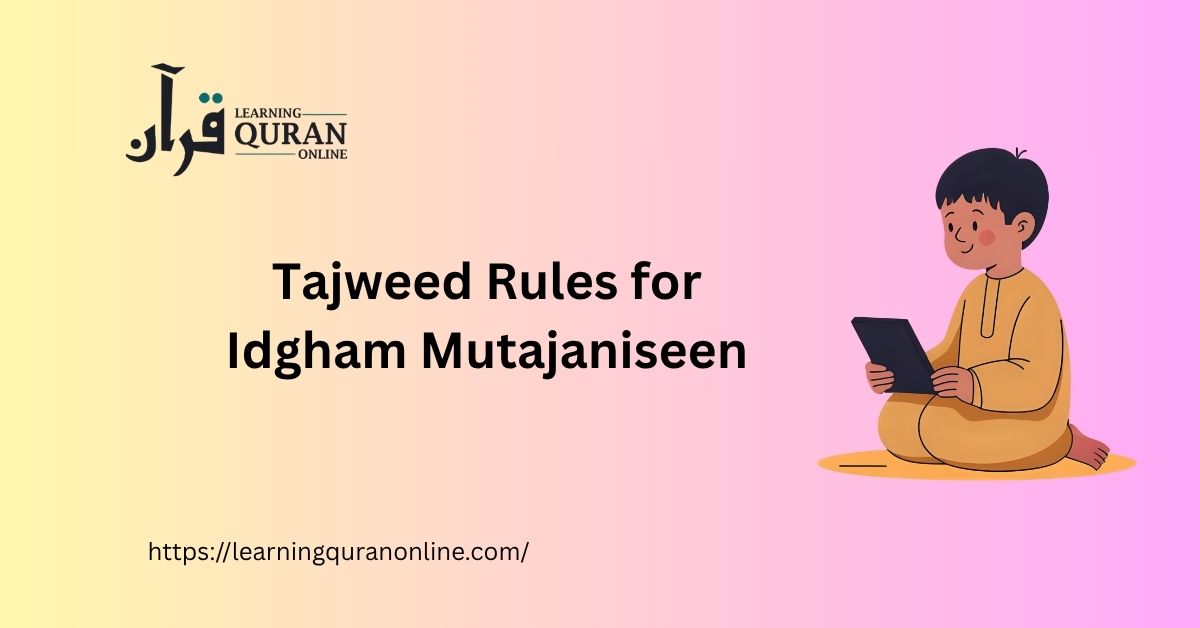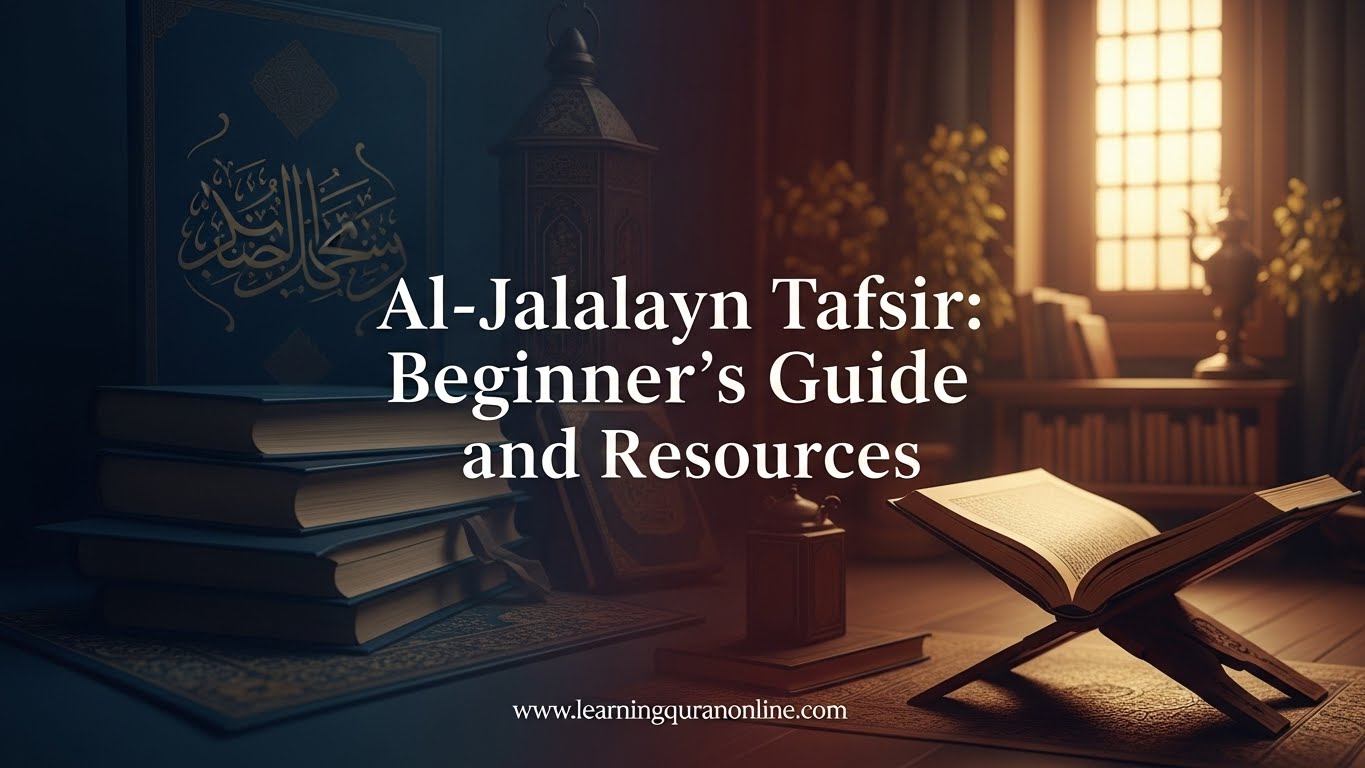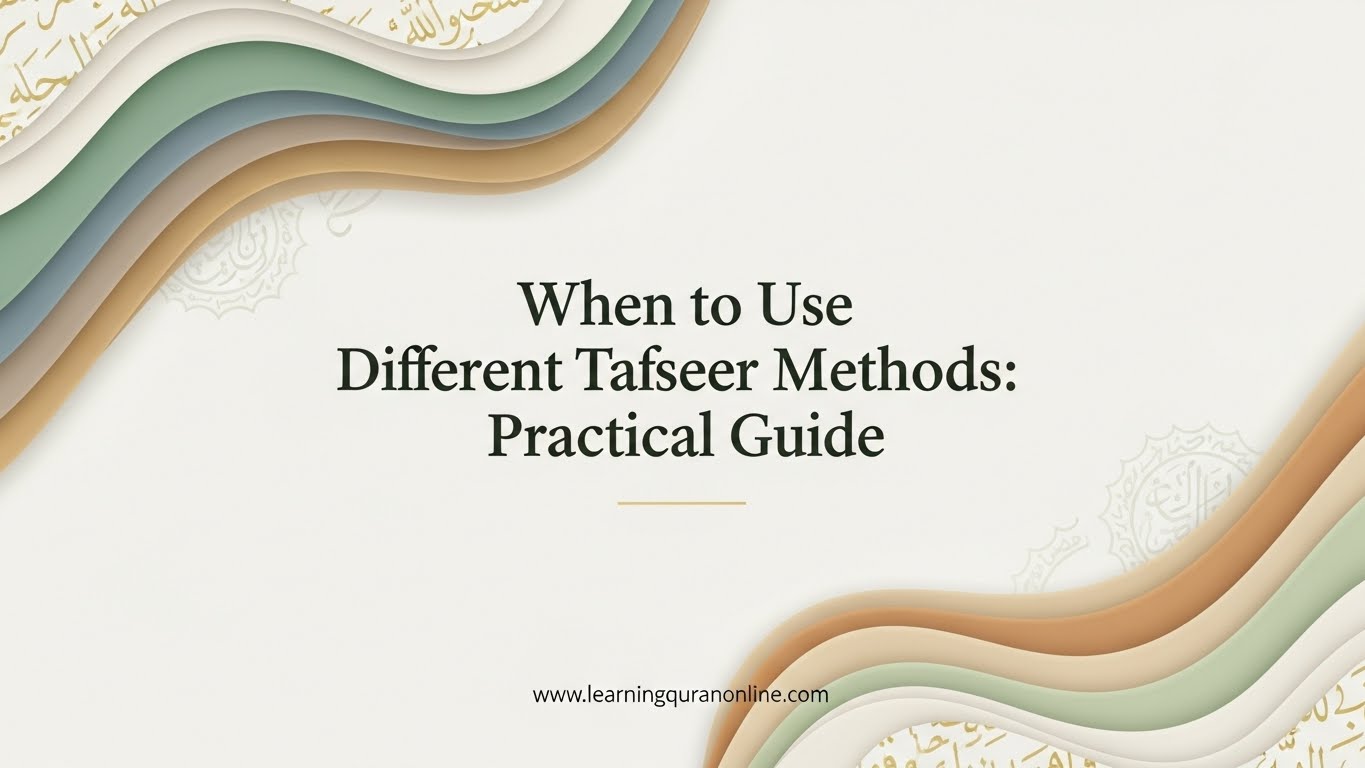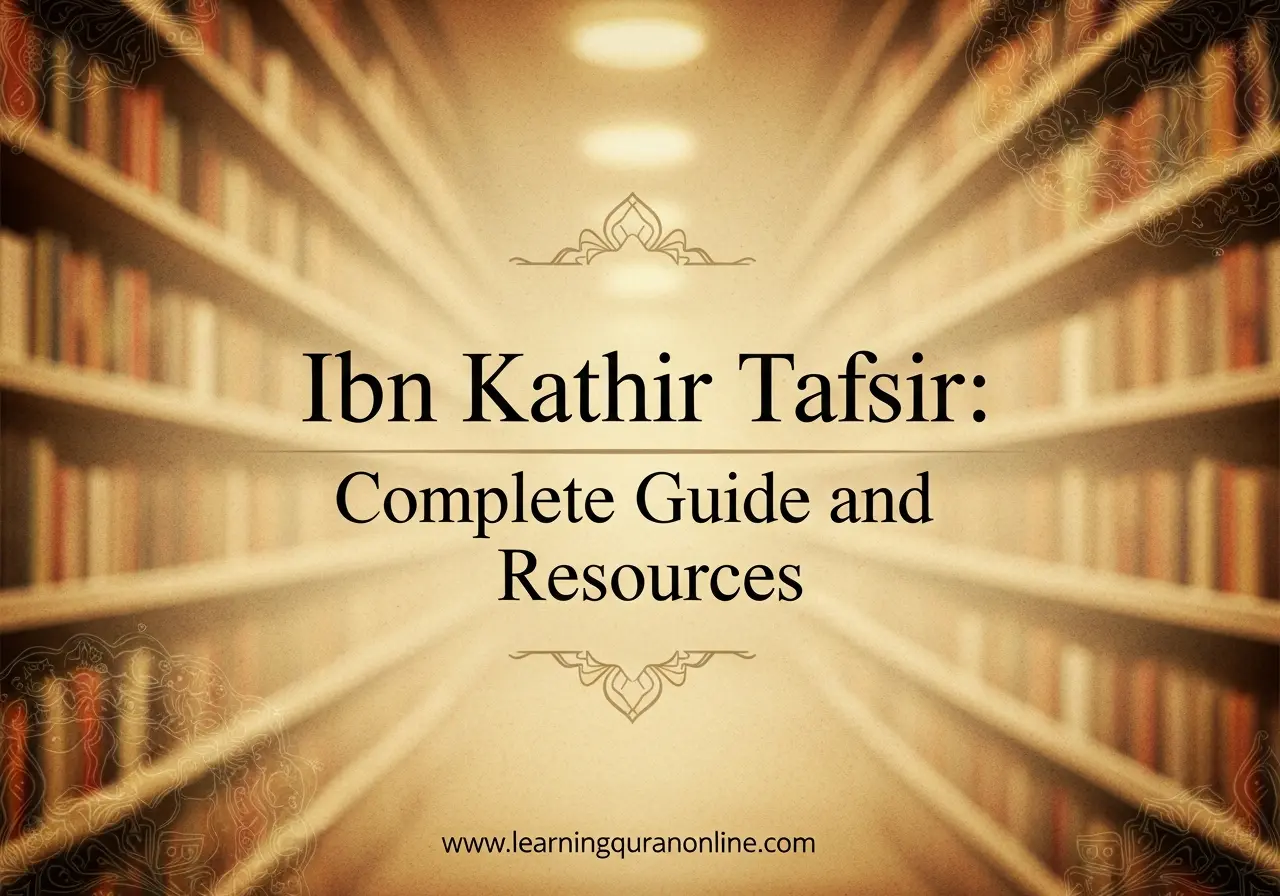Table of Contents
ToggleWhat is Idgham? Basic Tajweed Definition
In tajweed terminology, idgham (الإدغام) literally means “insertion” or “merging.” It occurs when the sound of a letter is merged into the next letter so that the first letter is no longer distinctly heard. This merging helps achieve smooth, flowing recitation and often involves a nasal sound known as ghunnah in certain cases.
Understanding Idgham Mutajaniseen
Idgham Mutajaniseen (الإدغام المتجانسين) refers to the kind of idgham that takes place when two letters come together that are similar in their point of articulation or share close characteristics. The concept is closely related to the familiar rules applied to noon saakin (نْ) and tanween (ً ٍ ٌ), where the noon sound is assimilated into the following letter under specific circumstances.
Why the term “Mutajaniseen” matters
The Arabic root of Mutajaniseen refers to things that are “similar” or “matching.” In the context of tajweed, it reminds the reciter that the assimilation happens between letters that are similar enough in their articulation or phonetic behavior to allow smooth merging without changing the meaning of the words.
Core Tajweed Rule: Noon Sakinah and Tanween
When studying idgham, you will repeatedly encounter rules for when noon saakin (نْ) or tanween must be treated as one of four possibilities:
- Izhar — clear articulation (no assimilation)
- Ikhfaa — concealment (partial assimilation with nasalization)
- Iqlab — conversion (noon changes to meem sound)
- Idgham — assimilation (full merging into the following letter)
Idgham is further categorized into idgham with ghunnah (nasalization) and idgham without ghunnah. This classification is essential for applying correct pronunciation and rhythm.
Other Relevant Blogs:
- Tajweed Rules for Qalqalah
- Tajweed Rules for Ghunna
- Tajweed Rules for Meem Saakin
- Tajweed Rules for Noon Saakin and Tanween
- Tajweed Rules for Stopping and Starting
- Tajweed Rules for Madd
- Tajweed Rules for Ikhfa
- Tajweed Rules for Idgham
- Tajweed Rules for Iqlab
- Tajweed Rules for Ikhfa Shafawi
- Tajweed Rules for Idgham Mushkilayn
Idgham with Ghunnah vs. Idgham without Ghunnah
The practical distinction used in tajweed classes is:
- Idgham with Ghunnah — when noon saakin or tanween is followed by one of these letters: ي (ya), ن (nun), م (meem), و (waw). These letters cause merging plus a nasal sound (ghunnah) maintained for approximately two counts.
- Idgham without Ghunnah — when noon saakin or tanween is followed by ل (lam) or ر (ra). In these cases the noon is merged into the following letter but without ghunnah.
These standard groupings are often taught with short mnemonic aids in tajweed courses (e.g., the letters ي ن م و for idgham with ghunnah and ل ر for idgham without ghunnah).
Examples: How Idgham Mutajaniseen Appears in Words
Seeing the rule in context makes it easier to adopt correct pronunciation. Below are examples showing noon saakin or tanween followed by letters that cause idgham:
- Idgham with ghunnah (ي ن م و):
- مِنْ يَقُولُ → pronounce as if the ن is merged into the ي with a nasal quality (approx. two counts).
- مَنْ نَفْسٍ → the ن merges into the following ن with ghunnah.
- مِنْ مَكَانٍ → the noon merges into the meem with ghunnah.
- مِنْ وَاقِعٍ → the noon merges into the waw with ghunnah.
- Idgham without ghunnah (ل ر):
- مِنْ رَبِّهِ → the noon merges into the ر with no ghunnah sound.
- مِنْ لَدُنْهُ → the noon merges into the ل without nasalization.
Idgham vs Other Similar Rules (Ikhfa, Iqlab, Izhar)
It’s important to distinguish idgham from related rules:
- Ikhfa: Partial hiding where the noon sound is somewhat concealed and followed by a nasalization — different letters cause ikhfa (e.g., 15 other letters).
- Iqlab: Conversion of noon to meem when followed by ب (ba). The noon changes sound to a meem-like sound with ghunnah.
- Izhar: Clear articulation when no assimilation applies (e.g., when noon saakin is followed by throat letters).
Practical Tips to Master Idgham Mutajaniseen
To make idgham Mutajaniseen a natural part of your recitation, practice regularly and focus on these practical points:
- Learn and memorize the idgham letter groups (ي ن م و) and (ل ر) and the conditions for each.
- Pay attention to makhraj (point of articulation) and sifat (letter attributes) to identify when letters are similar and allow merging.
- Practice ghunnah: hold the nasal sound for approximately two beats when idgham with ghunnah is required.
- Use controlled practice: read slowly, identify noon saakin/tanween instances, and practice merging into the following letter deliberately.
- Record your recitation and compare it with qualified reciters to check accuracy of merging and ghunnah length.
Common Mistakes and How to Avoid Them
Even experienced reciters can slip. Watch out for these common errors:
- Failing to merge the noon into the following letter (resulting in separation and unnatural pauses).
- Using ghunnah where idgham without ghunnah is required (especially before ل and ر).
- Holding ghunnah too long or too short — aim for roughly two counts for idgham with ghunnah.
- Confusing idgham with ikhfa or iqlab — learn the letter groups for each rule to avoid mistakes.
Practice Exercises (Short Drills)
Use the following drills to improve recognition and execution of idgham Mutajaniseen. Read slowly at first, then increase pace as you gain confidence.
- Pick verses or phrases containing noon saakin or tanween. Identify the following letter and categorize it (idgham with ghunnah / idgham without ghunnah / ikhfa / iqlab / izhar).
- Practice reading each phrase twice: the first time pronouncing the noon clearly, the second time applying idgham correctly.
- Record and compare: listen for proper merging and ghunnah length.
When to Seek a Tajweed Teacher
Idgham Mutajaniseen, while logical, can be subtle in sound. If you are uncertain about your application of ghunnah length, makhraj precision, or differentiating between idgham and ikhfa, working with a qualified tajweed teacher is highly recommended. Live feedback speeds up correction and helps you build confident, correct recitation habits.
Conclusion: Make Idgham Part of Your Recitation Routine
Mastering the tajweed rules for idgham — including the concept of Idgham Mutajaniseen — will make your Quran recitation smoother, more beautiful, and more faithful to the classical recitation tradition. Start by memorizing the relevant letter groups, pay attention to ghunnah and articulation, practice with intention, and seek teacher feedback when needed. Whether you are learning through local classes or through an online Quran learning academy like Learning Quran Online, steady practice will bring steady improvement.
















